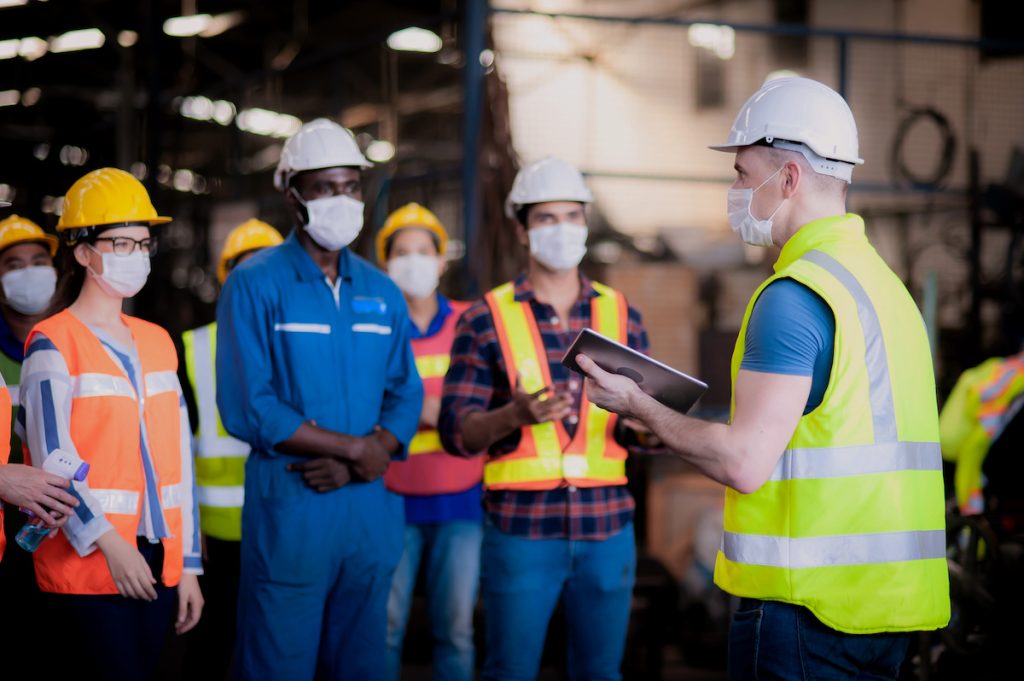The goal of a safety committee is to bring employees and management together to maintain a safe and healthy workplace. It is a safety strategy more and more companies are taking advantage of to reduce injuries, enhance their safety culture, and save on work comp costs. If you want to learn more about the basics and benefits of a safety committee, you can do that here. If you are already convinced that a safety committee is right for your company, then keep reading. This article will talk about how to make a safety committee successful.
Goals to Communicate
To form an effective committee, it must have strong management commitment and must be accountable for achieving its goals.
The following goals should be communicate and achieved:
- Strive to identify workplace hazards.
- Collectively review reports of accidents and near misses.
- Keep accurate records of all committee activities.
- Periodically evaluate its strengths and weaknesses and make changes as needed.
- Help implement corrective actions.
Membership Tips
Employees should be from all levels, shifts and departments. The committee should be made up of employees that represent all work groups and shifts. Ideally, the members should be volunteers but depending on the response, specific individuals may still be asked to join the committee. In addition, a membership rotation should be established to keep things fresh.
It is important that top management be a member of the committee. If top management isn’t part of the committee, they should at least attend the initial meeting and attend meetings periodically. Top management should review the meeting minutes and be available to answer questions and concerns from the committee. Management should establish the authority of the committee and continue to support their efforts.
The number of members will depend on how many workers the company employs:
- If the company has twenty or fewer employees, the committee should have at least two members.
- If the company has more than twenty employees, the committee should have at least four members.
- For large companies, a target of five to ten committee members is ideal.
Once the committee team is established they should establish ground rules, discussing the following:
- Set a schedule for the committee to meet (e.g. every two weeks or once a month at a certain date and time) that is as convenient as possible for all members.
- Establish and prioritize the duties of the committee (e.g. periodic facility self-inspections, development of written safety programs, accident and incident reviews).
- Determine who will be responsible for correcting safety issues identified by the committee.
OSHA Recommendations
For a more in depth look on what safety committees should focus on or do, OSHA has some recommendations:
- Agree on a leader or chairperson.
- Serve at least one year, whenever possible.
- Be trained in accident and incident investigation principles and know how to apply them.
- Establish accident investigation procedures that will identify hazards and ensure they are corrected.
- Outline a system for employees to report hazards to management and suggest how to correct hazards.
- Establish a procedure for reviewing inspection reports and making recommendations to management.
- Evaluate all accident and incident investigations and recommend how to prevent them from happening again.
- Evaluate how management will hold employees accountable for working safely and recommend ways to increase accountability. This could include evaluating the effectiveness of safety incentives; disciplinary policies; and employee participation in hazard identification.
- Maintain minutes or notes of all meetings and make them available to all workers. The committee minutes should include:
- The date of the meeting and names of attendees.
- Safety and health issues discussed – including hazards involving tools, equipment, machinery, the work environment, and work practices.
- A list of corrective actions with deadlines and the name of person(s) who will follow up on the recommendations.
Additional Safety Committee Tips
Here are a few additional tips to help your safety committee become successful:
Identify Trends: Look for patterns in your workers’ compensation claims. The committee should look at the body part injured, cause of injury and result of the injury. Identify patterns by comparing this info. with other data, like job title, job tasks, work location, shift, etc.
Use a Inspection Checklist: The team should use a safety review and inspection process – use a comprehensive checklist to identify job site hazards and observe employees while they are working. Periodic inspections will allow the team to gauge the effectiveness of their efforts.
Reinforce Safety: Safety reminders will keep a focus on safety and will remind employees of the importance of working safely and will increase their awareness of hazards in their work area. There are different types of safety promotions that can be used. An example is having toolbox talk meetings or emailing staff when new construction is happening around the building.
Conduct a Yearly Review: The committee should review their progress at least once a year. Each year, the committee’s progress should be reviewed by top management in order to evaluate the committee’s success in helping the company to meet its established safety goals and objectives.
For more safety strategies that reduce workplace injuries and costs, contact our team at [email protected].

